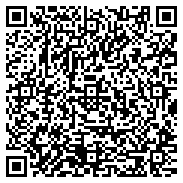Mental Burden Analysis of the Use of Learning Systems in e-Learning

BANDUNG, itb.ac.id - In order to anticipate the spread of COVID-19, teaching, and learning activities both in schools and colleges are now conducted online. Institut Teknologi Bandung itself has imposed online lectures as of March 16, 2020, and then extended as stated in Circular Letter No.123 / I1.B01 / PP / 2020 concerning Extension of Online Lecture Period.
Besides the flexibility of online learning, there are also other sides that need to get serious attention from the use of e-Learning, one of which is the mental burden felt by users. Industrial Engineering Lecturer, ITB Faculty of Industrial Engineering Ari Widyanti, ST, MT, Ph.D., along with his student Syalom Hasudungan, ST, worked with a lecturer from Incheon National University, Jaehyun Park (associate professor) conducting research on readiness and perceptions of burden the mentality of using e-learning among Indonesian students. This research was published in 2020 in the international journal Knowledge Management & E-Learning with the title "e-Learning and Perceived Learning Workload among Students in an Indonesian University".
Ari Widyanti explained, e-Learning is an interactive online learning system that has been applied at the level of higher education institutions. This learning system has the disadvantage of reducing the process of socialization among individuals due to the reduced process of face-to-face communication. Therefore, blended learning is proposed to overcome weaknesses in the learning process through e-Learning and in the classroom.
"Blended learning is e-Learning learning that is done interactively. Over time, the use of blended learning and e-learning continues to grow because of its flexibility which can adjust the place, time, and speed of learning, "he said as conveyed in the journal.
Mental burden is defined as a person's cognitive ability to a particular workload when someone feels the workload provided exceeds the capacity of a cognitive can be said to be a highly experienced mental burden. In the learning process e-Learning, the use of technology is the main key, when it does not have the ability to operate adequate technology will be a pressure for users to use e-Learning which has implications for the high mental load. "Besides that, drowsiness is also a consequence of e-Learning learning due to the lack of face-to-face communication. This drowsiness will result in a decreased attention and learning performance, "explained Ari.
Reducing Mental Burden
One effort that can be done to reduce the mental burden and drowsiness during the learning process is to increase the level of readiness, both mentally and physically. One of the things that can be done by setting up technology and preparing an internet connection that is used correctly and smoothly, considering the learning process of e-Learning is done by self-learning. Therefore, in this study used 3 parameters with 3 different instruments, namely the level of readiness, sleepiness, and perception of subjective mental burden with NASA TLX, involving 51 students who are learning by e-Learning and in class.
Ari Widiyanti said, the results obtained showed that there was no difference in the level of readiness between e-Learning and classroom learning, this could be justified because the respondents involved were ITB students who were generally already adept at using technology for e-Learning. The level of sleepiness in the e-Learning process is farther than in the classroom measured by the KSS (Karolinska Sleepiness) Scale and the user's mental burden is higher when learning e-Learning compared to in the classroom.
He revealed, the high mental burden could be due to the absence of lecturers in the class, because usually, lecturers would limit the material that was considered important to be studied while in the e-Learning process students had to independently determine the material that needed to be studied and not.
"In addition, according to Sulistyo-Basuki in 2007, Indonesian people tend to do direct learning rather than through e-Learning, because Indonesian characters prefer to communicate directly compared to writing or virtually. If the results of measuring mental load with NASA TLX, the dimensions of performance and frustration have a significant difference between e-learning learning and in classrooms where e-Learning learning has a higher number, "he said.
Reporter: Diah Rachmawati (Industrial Engineering, 2016)
Translator: Elisabeth Sirumapea (Manajemen, 2020)

scan for download






